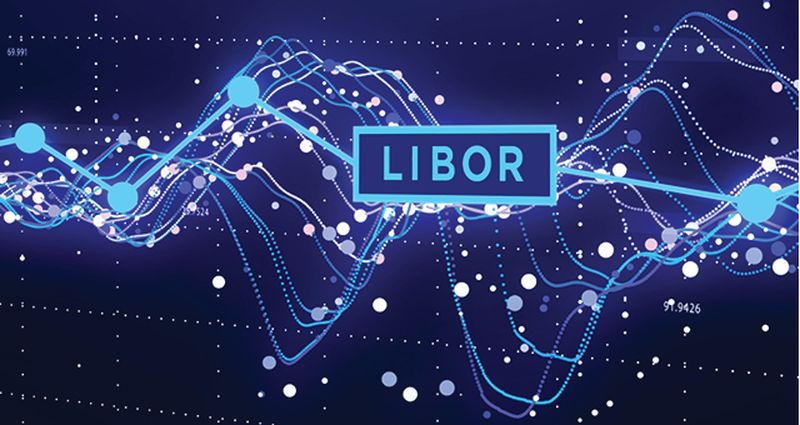LIBOR Phaseout and SOFR Transition: Impact on Global Finance
The London Interbank Offered Rate (LIBOR) was once the backbone of global financial markets, influencing everything from mortgages to derivatives. For decades, LIBOR was the standard benchmark for short-term borrowing rates between banks, setting the cost of trillions of dollars in loans worldwide. However, due to scandals, regulatory concerns, and market evolution, LIBOR was officially phased out in June 2023. This article explores LIBOR’s history, its downfall, and what comes next for global interest rate benchmarks.
What Was LIBOR?
LIBOR was an interest rate at which major global banks lent to each other on a short-term basis. Administered by the Intercontinental Exchange (ICE), LIBOR covered five major currencies (USD, EUR, GBP, JPY, and CHF) and seven maturities ranging from overnight to one year. It served as the reference rate for various financial products, including:
- Interbank loans and derivatives
- Consumer loans (mortgages, student loans, credit cards)
- Floating-rate bonds
- Interest rate swaps
Each day, banks would submit their estimated borrowing rates, and the ICE would calculate LIBOR using a trimmed mean methodology—excluding the highest and lowest submissions before averaging the remaining values.
The LIBOR Scandal and Its Downfall
LIBOR’s credibility was severely damaged in the early 2010s when it was revealed that major banks had manipulated the rate to benefit their trading positions. Banks including Barclays, UBS, and Deutsche Bank faced regulatory fines and reputational damage as investigations uncovered that traders had colluded to submit artificially high or low rates.
This scandal, coupled with concerns about LIBOR’s reliability—since it was based on self-reported estimates rather than actual transactions—prompted regulators to seek alternatives. In 2017, the U.K.’s Financial Conduct Authority (FCA) announced plans to phase out LIBOR, leading to a transition period that concluded in June 2023.
The Shift to SOFR and Other Benchmarks
LIBOR’s replacement varies by region, with different financial hubs adopting alternative risk-free rates (RFRs):
- United States: The Secured Overnight Financing Rate (SOFR) is now the primary benchmark for U.S. dollar-based financial products. Unlike LIBOR, SOFR is based on actual overnight repurchase (repo) market transactions, making it more transparent and less susceptible to manipulation.
- United Kingdom: The Sterling Overnight Index Average (SONIA) has replaced GBP LIBOR.
- European Union: The Euro Short-Term Rate (€STR) is now the preferred benchmark.
- Japan: The Tokyo Overnight Average Rate (TONA) replaced JPY LIBOR.
- Switzerland: The Swiss Average Rate Overnight (SARON) now serves as the benchmark.
Key Differences Between LIBOR and SOFR
- Calculation Methodology: LIBOR relied on bank estimates, whereas SOFR is transaction-based, reflecting real lending activity.
- Credit Risk: LIBOR incorporated bank credit risk, making it higher and more volatile. SOFR, being collateralized by U.S. Treasuries, is a risk-free rate.
- Tenor Availability: LIBOR had multiple maturities, while SOFR is primarily an overnight rate, requiring adjustments for longer-term contracts.
Impact of the LIBOR Transition
The transition away from LIBOR has had far-reaching effects on financial markets:
- Corporate and Consumer Loans: Floating-rate mortgages and loans needed to be adjusted to new benchmarks, requiring renegotiation and contract amendments.
- Derivatives Market: Interest rate swaps, futures, and options had to shift pricing mechanisms from LIBOR to alternative rates.
- Regulatory Compliance: Financial institutions faced significant operational challenges in transitioning to SOFR and other RFRs.
Challenges and the Road Ahead
While SOFR and other benchmarks provide a more reliable foundation, the transition has not been entirely smooth. Some of the key challenges include:
- Lack of Historical Data: Unlike LIBOR, which had decades of history, SOFR and other new benchmarks are still building credibility.
- Adjusting Term Structures: LIBOR provided forward-looking term rates, while SOFR is primarily an overnight rate. Market participants have had to develop mechanisms like SOFR term rates to facilitate the transition.
- Global Coordination: Different regions have adopted different benchmarks, complicating international financial transactions.
Conclusion
LIBOR’s phaseout marks the end of an era in global finance. While the transition to SOFR and other RFRs has been complex, it ultimately provides a more transparent, transaction-based framework for determining borrowing costs. As financial markets continue adapting, investors, corporations, and consumers must stay informed about these changes to navigate the evolving interest rate landscape effectively.🔍 Get more insights into the evolving AI and tech landscape with MINTALPHAA.
🎙️ Stay updated on the latest crypto and tech trends through our Spotify podcast.
